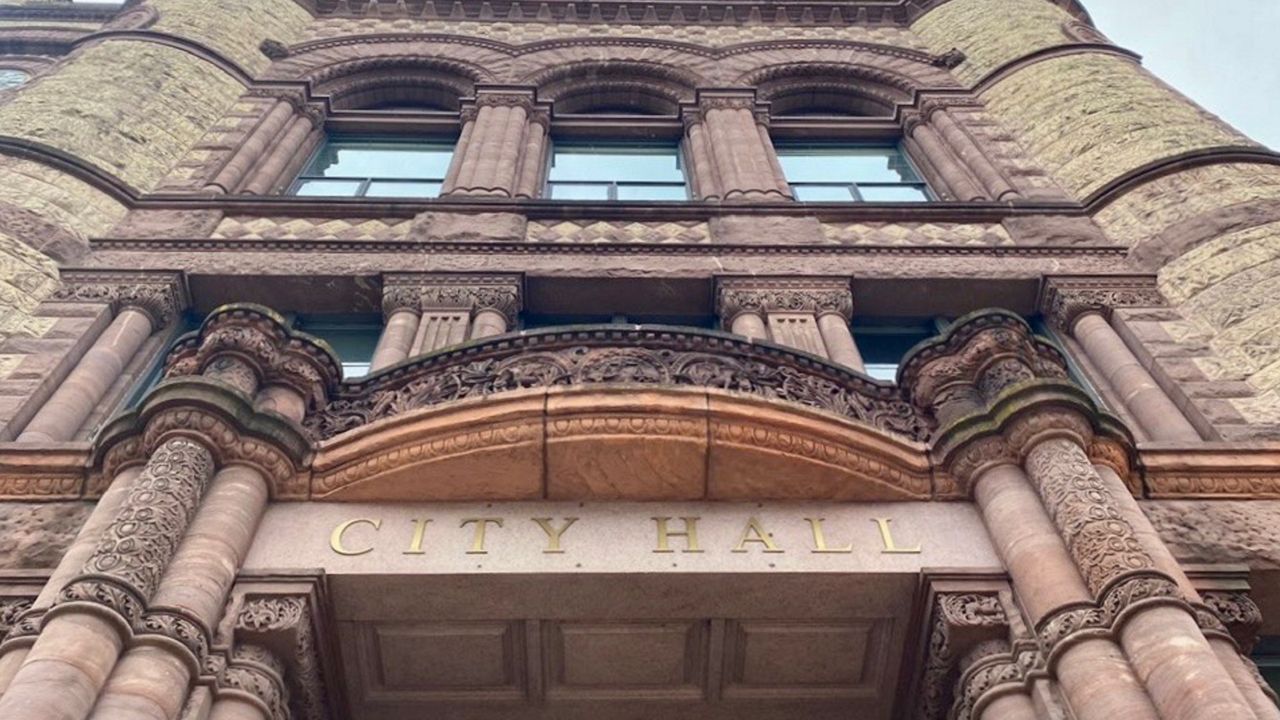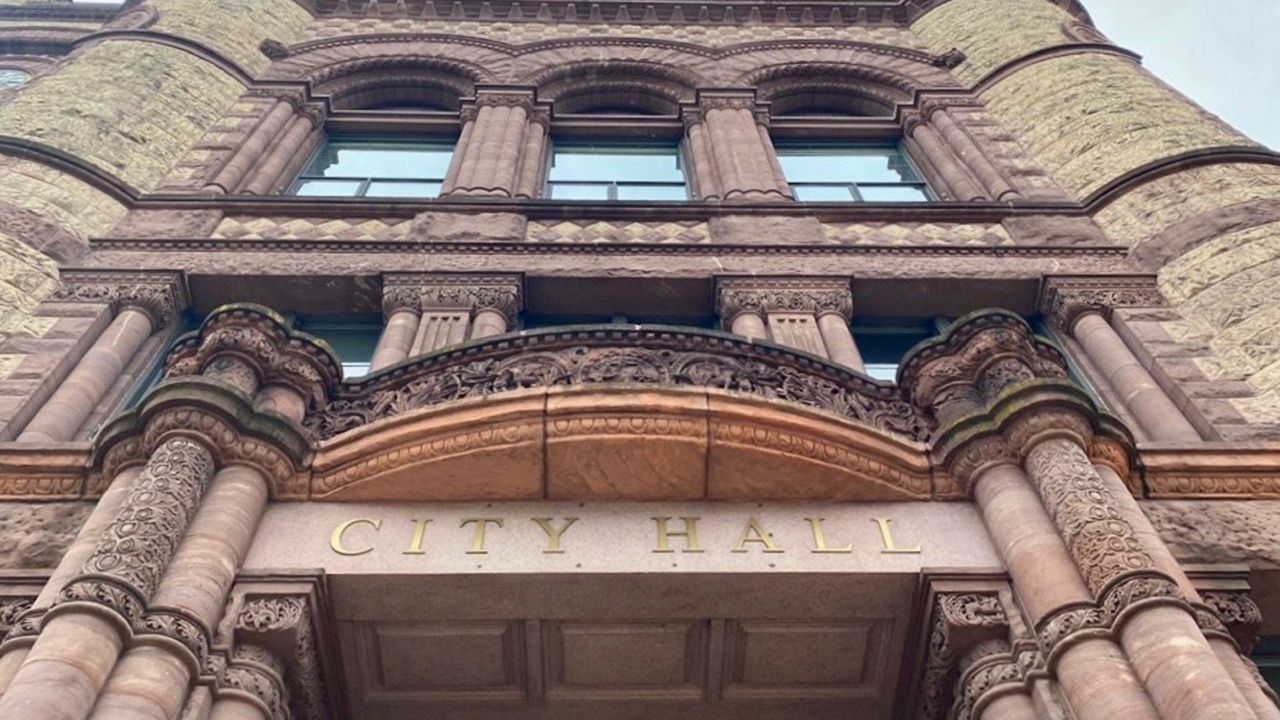CINCINNATI — Cincinnati’s mayor and city manager view their proposed budget for fiscal year 2023 as a vision for the city that emphasizes investment in both residents and the city. While prioritizing familiar issues like public safety, it also increases social services and attempts to capitalize on Intel’s major investment in Ohio.
Now, over the next few weeks, residents have their chance to weigh in on the proposal before City Council finalizes the $1.5 billion guide to city spending for the next 12 months.
The first public meeting is Thursday, June 2 at Madisonville Recreation Center.
What You Need To Know
- Cincinnati released a $1.5 billion proposed budget for fiscal year 2023
- The budget includes an increase in funding for the police department, but it also has a record investment in human services
- The city also plans to use this budget to capitalize on Intel’s recent investment in Ohio
- City to hold three public hearings on this budget to give residents a chance to weigh in
Mayor Aftab Pureval described the budget proposal as the city’s “action on the priorities of Cincinnatians.”
“We have listened to the community, we have worked together with council to establish clear priorities and goals, and the administration and I are confident that the budget embodies and executes on those goals,” Pureval said last week after the budget’s reveal.
He joined interim City Manager John Curp at City Hall to unveil the proposal to the media. The mayor’s office dubbed it “VISIONNATI” for how the proposal reflects “our values and priorities” as a city.
Highlights of the plan include spending more than $17 million to fund outside programs ranging from the Cincinnati African American Chamber to MORTAR to ArtsWave.
The city will also spend about $8 million on various social services programs through its Human Services Fund, which is administered by the United Way of Greater Cincinnati.
Human Services spending in this budget represents about 1.7% of the general fund, which exceeds the 1.5% the past City Council aimed to reach by 2023. Over the years, critics had vocalized their displeasure with the city’s lack of investment in services, which hovered just below 1% of the general fund for more than a decade.

The city of Cincinnati needs to finalize its budget for fiscal year 2023 by July 1. (Casey Weldon/Spectrum News 1)
The budget also includes $7 million for The Port to develop several sites in the city for high-tech manufacturing.
“The Port will obtain and prepare the sites, and then they’ll work with REDI to market and sell the sites to prospective tech companies or other businesses,” Pureval said. The aim is to capitalize on a recent decision by Intel to construct a $20 billion facility just outside Columbus.
The proposal also calls for the city to spend $12 million for critical maintenance on parks, recreation centers, health centers and vehicle repair facilities.
Perhaps the most controversial inclusion is a 2% increase to CPD, ballooning its budget to $169.1 million. That additional $3.29 million is a mixture of personnel and non-personnel costs. There’s a 7% boost scheduled for the Cincinnati Fire Department as well.
Those increases will fund two recruit classes each for both police and fire. The goal is to offset an expected loss of retiring police and fire personnel.
Public safety accounts for more than two-thirds of the budget.
A full breakdown of the highlights of the budget is included below.
Curp said this budget “sets the course for aligning the priorities in Cincinnati City government and the mandate of this mayor and council.” He went on to describe it as focusing on providing best-in-class “basic services, public safety, affordable housing, environmental sustainability and equitable economic growth.”
Cincinnati has a biennial budget process, which includes preparing budgets for two-year periods before re-evaluating and updating based on financial realities of that second year.
FY 2023 is the second year of that biennial process, and is the first under Pureval, Curp and the majority of members of this City Council.
The mayor and city manager this year took the unusual, but not unprecedented, step to release a joint recommended budget.
Traditionally, the city manager works with the budget office to create a recommended budget based on City Council’s priorities. The city manager would then submit a draft to the mayor, who’d have 15 days to make changes before sending it on to City Council for the full review process.
“From Day One,” City Council, this city administration and office have “worked cooperatively with a shared vision for the future of Cincinnati,” Pureval said in response to questions about a joint release.
On April 4, City Council’s Budget and Finance Committee held a first-of-its-kind public hearing to gather feedback before the city manager’s office finalized the recommended budget. The city also held three virtual meetings with residents and community councils to discuss the budget process, including offering them a chance to provide opportunities for input.
The goal, Curp’s office said, was to hear from the public early enough that their input would inform the process, rather than fill in holes after the majority of the books had been effectively decided.
“During the budget process, we have worked in lock-step to collaborate with the [city manager’s office] to establish a clear set of priorities for our city. Releasing the recommended budget together is a reflection of our unified goals,” Pureval added.
The city’s proposal includes two parts – an operating budget and a capital budget. The operating budget covers mostly public services; those provided by the city, like police, fire, trash collection, recycling. The capital budget is for things like maintaining city buildings, or purchasing new vehicles.
The operating budget accounts for $1.2 billion of the proposed $1.5 billion budget for this fiscal year.
By law, the city has to have what’s called a “balanced budget,” meaning it cannot spend more than its income.
This budget proposal is balanced but not structurally balanced because it relies on several one-time funding sources – pools of money that won’t be available in the future – to make that happen. That includes $18.6 million in federal American Rescue Plan funding to cover the deficit.
The proposal plans to set aside some of its ARP funding for future uses. The city’s revenue projections have “dramatically improved from previous forecasts,” Curp wrote in his budget message, but the city wants to use the reserved ARP funds to “protect our basic services.”
The city plans to use ARP funds to cover future deficits for the next two fiscal years.
The budget will become a primary topic of the Budget and Finance Committee during its regular Tuesday meetings. The city has three planned public hearings to discuss the budget; the last meeting occurs June 14.
City Council will then vote on changes before deciding on a final budget.
The city has until the end of June to amend and pass a final version. Still, Curp said he felt the process could wrap up as soon as June 22. The city’s budget year starts July 1.
Public budget hearings
-
Thursday, June 2: Madisonville Recreation Center, 6 to 8 p.m.
-
Saturday, June 4: City Hall, 11 a.m. to 1 p.m.
-
Tuesday, June 14: College Hill Recreation Center, 6 to 8 p.m.
Budget highlights
Operating Budget
-
Funding two new classes of police and fire recruit classes
-
Increasing funding for the Cincinnati Police Department by $3.29 million over last fiscal year
-
Funding for the Alternative Response to Crisis program
-
Increasing funding to support youth employment by $1 million to a total of $2.4 million
-
$25,000 additional leveraged support (over base annual support) to each:
-
Increasing investment in the Human Services Fund to a record 1.6% of the city’s general fund, amounting to an additional $2 million over the previous budget
-
$1 million to support the childcare provider workforce
-
$150,000 toward “boots-on-the-ground,” small community-led efforts to “uplift” neighborhoods
-
$611,000 to the Affordable Housing Trust fund through the short-term rental tax and $489 to the Strategic Housing Initiative Program
Capital budget
-
$3 million additional critical maintenance funding of:
-
$4 million in expanded funding for pedestrian safety improvements for children near schools
-
$4 million in expanded funding for road repairs
-
$3 million in expanded funding for sidewalk and hillside step repairs in disadvantaged areas
-
Investing $2.6 million in public-safety facility improvements
-
$3.4 million for a new Fire Training Tower
-
$2 million to support the relocation of the CPD gun range
-
$5 million to “help close the digital divide” in Cincinnati neighborhoods via broadband
-
Increased funding by $4 million to further the goals of the Green Cincinnati Plan
-
Historic $7 million investment with The Port and REDI to develop ready-to-build sites
The full proposed budget is available on the city of Cincinnati website.




